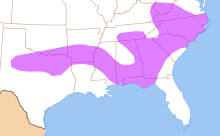| Bi de Spalte wo grau sin, goot mer devo uss, dass si nit artikuliert werde chönne; wysi Spalte, ùn Zeiche, wo nit verlinkt sin, hen kei offiziels IPA-Zeiche un/oder sin uss keinere Sprooch bekannt.
- ↑ Lass, Roger (2002), p.121
- ↑ Rogers, Henry (2000), The Sounds of Language: An Introduction to Phonetics, Essex: Pearson Education Limited, ISBN 978-0-582-38182-7
- ↑ McMahon, April (2002), p.120
- ↑ North American English: General Accents.
- ↑ Lass, Roger (2002), p.121
- ↑ Irish English and Ulster English. S. 4 and 7.
- ↑ Lass, Roger (2002), "South African English", in Mesthrie, Rajend (ed.), Language in South Africa, Cambridge University Press, ISBN 9780521791052
- ↑ McMahon, April (2002), An Introduction to English Phonology, Edinburgh: Edinburgh University Press Ltd, ISBN 0 7486 1252 1
- ↑ Wells, John C. (1982). Accents of English. Volume 1: An Introduction (pp. i–xx, 1–278), Volume 3: Beyond the British Isles (pp. i–xx, 467–674). Cambridge University Press. ISBN 0-52129719-2, 0-52128541-0.
- ↑ Scottish Standard English and Scots.
- ↑ Labov, William; Ash, Sharon; Boberg, Charles (2006), The Atlas of North American English, Berlin: Mouton-de Gruyter, ISBN 3-11-016746-8
- ↑ Rogers, Henry (2000), The Sounds of Language: An Introduction to Phonetics, Essex: Pearson Education Limited, ISBN 978-0-582-38182-7
- ↑ McMahon, April (2002), p.31
- ↑ Christopher P. Wilde: Gamale Kham phonology revisited, with Devanagari-based orthography and lexicon. In: Journal of the Southeast Asian Linguistics Society. 2016
- ↑ 15,0 15,1 Šuštaršič, Komar & Petek (1999:136)
- ↑ 16,0 16,1 Greenberg (2006:18)
|
